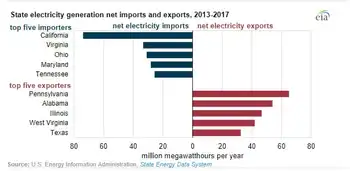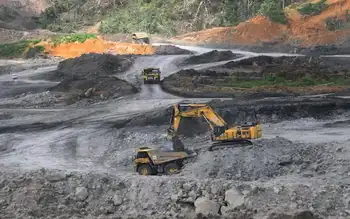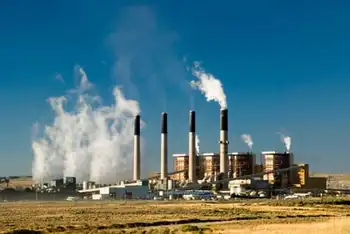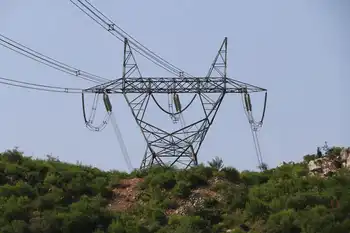Environmentalists target four-dozen coal plants
At least four dozen coal plants are being contested in 29 states, according to a recent Associated Press tally. The targeted utilities include giants like Peabody Energy and American Electric Power down to small rural cooperatives.
From lawsuits and administrative appeals against the companies, to lobbying pressure on federal and state regulators, the coordinated offensive against coal is emerging as a pivotal front in the debate over global warming.
“Our goal is to oppose these projects at each and every stage, from zoning and air and water permits, to their mining permits and new coal railroads,” said Bruce Nilles, a Sierra Club attorney who directs the group’s national coal campaign. “They know they don’t have an answer to global warming, so they’re fighting for their life.”
Industry representatives say the environmentalistsÂ’ actions threaten to undermine the countryÂ’s fragile power grid, setting the stage for a future of high-priced electricity and uncontrollable blackouts.
“These projects won’t be denied, but they can be delayed by those who oppose any new energy projects,” said Vic Svec, vice president of the mining and power company Peabody Energy.
While observers say forecasts of power grid doom are exaggerated, the importance of coal - one of the countryÂ’s cheapest and most abundant fuels - is undeniable. Coal plants provide just over 50 percent of the nationÂ’s electricity. They also are the largest domestic source of the greenhouse gas carbon dioxide, emitting 2 billion tons annually, about a third of the countryÂ’s total.
Environmental groups cite 59 canceled, delayed or blocked plants as evidence they are turning back the “coal rush.” That stacks up against 22 new plants now under construction in 14 states - the most in more than two decades.
Mining companies, utilities and coal-state politicians promote coal in the name of national security, as an alternative to foreign fuels. With hundreds of years of years of reserves still in the ground, theyÂ’re also pushing coal-to-diesel plants as a way to sharply increase domestic production.
The outcome of the fight over coal could determine the nationÂ’s greenhouse gas emissions for years to come, said Gregory Nemet, assistant professor of public affairs at the University of Wisconsin.
“It’s pretty much irreversible,” Nemet said. “Once a coal plant is built, it will last 50 years or so.”
But in opposing coal projects across the board, environmentalists risk hobbling more advanced coal plants that could rein in at least some of those emissions, Nemet said. He added that rising demand for electricity means more power “has to come from somewhere.”
“There’s too much pressure - in terms of energy independence and the inexpensiveness of that resource - to not use that coal,” Nemet said.
One of the latest challenges to a utility came in the heart of coal country - Montana, which boasts the largest coal reserves in the nation.
On Jan. 11, a state panel refused to rescind an airquality permit it had granted for a plant proposed for the Great Falls area by Southern Montana Electric, despite concerns about the plantÂ’s carbon dioxide emissions. The 250- megawatt plant is projected to emit the equivalent of 2.8 million tons of carbon dioxide annually, as much as a half-million vehicles.
The Montana Environmental Information Center, which had asked the panel to review the permit, vowed to appeal the ruling.
Nilles said the Sierra Club spent about $1 million on such efforts in 2007 and hopes to ratchet that figure up to $10 million this year.
Meanwhile, coal interests are pouring even more into a promotional campaign launched by the industry group Americans for Balanced Energy Choices. It spent $15 million last year and expects to more than double that to $35 million in 2008, said Joe Lucas, the groupÂ’s director.
Funding for the group comes from coal mining and utility companies such as Peabody and railroads that depend on coal shipments for a large share of their revenues.
PeabodyÂ’s Svec acknowledged a rush to build new plants, but denied the goal was to beat any of at least seven bills pending before Congress to restrict carbon dioxide emissions - a charge leveled by some environmentalists.
Rather, he said, the construction boom is driven by projections that the country will fall into a power deficit within the next decade if new plants are not built.
Industry attorney Jeffrey Holmstead said that could lead to a future of rolling blackouts as the economy expands and electricity consumption increases. Holmstead was in charge of the U.S. Environmental Protection AgencyÂ’s air program during the first five years of the current Bush administration.
The power deficit cited by industry officials is based on projections from the North American Electric Reliability Corp. NERC Vice President David Nevius said his group is “neutral” on what kind of plants should be built to meet rising demand.
“We’re not saying the lights will go out. We’re just saying additional resources are needed,” Nevius said. “We don’t say coal over gas over wind over solar.”
Utilities currently burn more than 1 billion tons of coal annually in more than 600 plants. Over the next two decades, the Bush administration projects coalÂ’s share of electricity generation will increase to almost 60 percent.
Environmental opposition to coal plants was galvanized by a U.S. Supreme Court decision in April that said carbon dioxide is a pollutant open to regulation.
The case, Massachusetts vs. U.S. Environmental Protection Agency, involved vehicle emissions. But environmentalists aim to use the decision as a fulcrum to leverage regulators to take a harder line on greenhouse gases in several emerging power plant disputes.
The result could serve as an early barometer of the reach of the Supreme Court ruling.
More tests of the two sidesÂ’ arguments are certain. Industry groups say at least 15 coal-fired power projects are nearing the end of the approval process and could soon start construction.
Related News
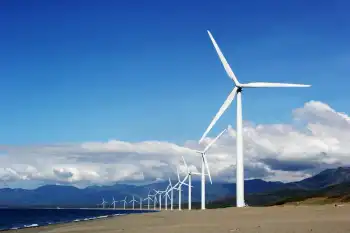
$550 Million in Clean Energy Funding to Benefit More than 250 Million Americans
WASHINGTON - The Biden-Harris Administration, through the U.S. Department of Energy (DOE), today released a Notice of Intent announcing $550 million to support community-based clean energy in state, Tribal, and local governments — serving more than 250 million Americans. This investment in American communities, through the Energy Efficiency and Conservation Block Grant (EECBG) Program, will support communities across the country to develop local programming and deploy clean energy technologies to cut emissions, reduce consumers’ energy costs, and help meet President Biden’s goal of a net-zero economy by 2050.
“This funding is a streamlined and flexible tool for local governments to…


